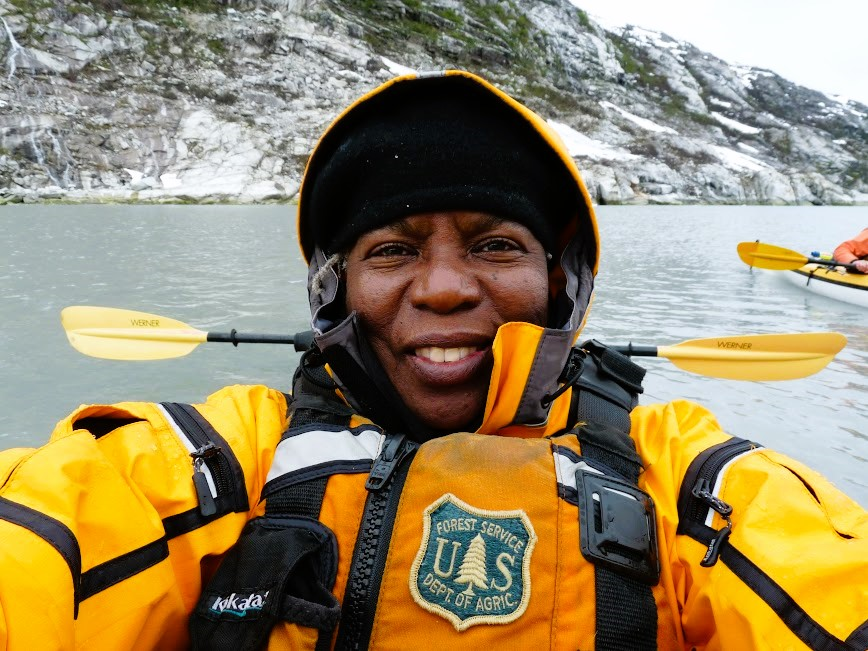Of Whales and Whalers
By Safina Center Fellow Jacqueline L. Scott
Camping on the beach in Chugach National Forest, Alaska. ©Jacqueline L. Scott
The humpback whale raised its tail and slapped the water. I quivered from joy as the pod of mom, dad, and youngster slipped below the cold and rich depths of the Pacific Ocean. We were whale watching in Prince William Sound, Alaska.
About 150 years ago we would have watched the whales for a different reason. Not for the beauty or the magnificence of the creatures, but for how much money could be made from them. Whales were hunted for their oil and bones. Whale oil lighted home and cities; it was used in soaps, paints, and explosives. Whalebone was the plastic of its day, and used to make corset ribs, umbrella spokes, and fishing rods.
When I think of whale hunting, it’s of Captain Ahab in Moby Dick, a man obsessed by an elusive whale. Ahab’s crew was multicultural including the Indigenous harpooners Tashtego and Queequeg. The Black crew included Daggoo an African harpooner, and the African Americans were Fleece the cook, and Pip the cabin boy. Real whale hunters, like William T. Shorey, chased whales in Prince William Sound. Shorey was Black and a captain of his own commercial whaling ship. Born in Barbados, he hunted whales around the world in the 1880s.
Four orcas sliced through the water; their dorsal fins raised like a flag. The top predators are elegant swimmers. Then a group of sea otters drifted by, floating on their backs. Big eyes, dexterous hands. Some carried pups who rested on the adult’s tummies.
Whales were pushed to the brink, on a one-way dive into extinction. Conservation efforts saved the cetaceans. Their numbers are recovering, but it requires sustained efforts to keep it that way.
Then the ship changed course and we headed over to see a glacier. Not too close! The glacier calved and a chunk of ice, about the size of a tall apartment block, crashed into the ocean. Bergy bits drifted by.
A kayak trip to see bergy bits and the retreating Nellie Juan Glacier, Alaska. ©Jacqueline L. Scott
The ice was pure and blue. It did not look that way in 1989 when the Exxon Valdez tanker spilled tons of crude oil into Prince William Sound. Sea birds died—about a quarter of million—coated in life-sucking grease. Whales, fish, and sea otters perished too. It was decades before the wildlife recovered. Some never did.
I was in Alaska as part of the Voices of the Wilderness artist-in-residence program run by U.S. Forest Service. Based in Chugach National Forest, I did conservation monitoring and researched the long Black history of the whaling industry. It is part of my academic research interests in the links between race and nature.
We camped on the beach, hiked the in hills, and kayaked in the ocean. Each day we learned more about the ecological and human history of the park and the surrounding public lands. Whales, orcas, seals, and sea otters. I was lucky to see these creatures of the deep, not piled in a dead heap, but swimming free.
Jacqueline L. Scott, kayaking in Prince William Sound, Alaksa, as part of the Voices of the Wilderness program. ©Jacqueline L. Scott



